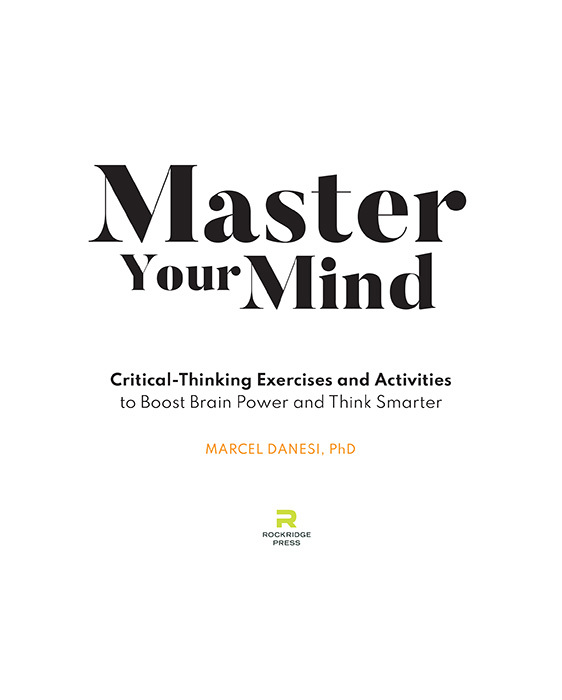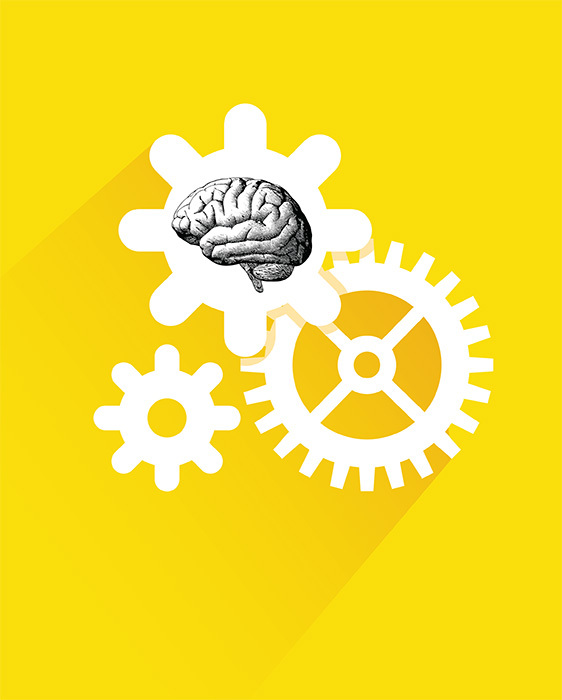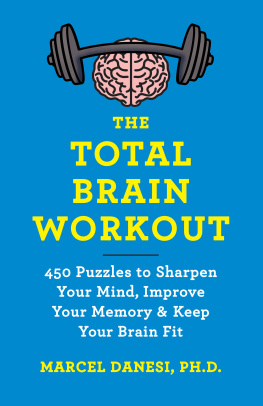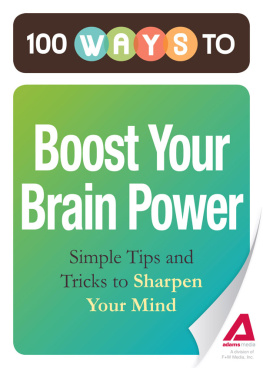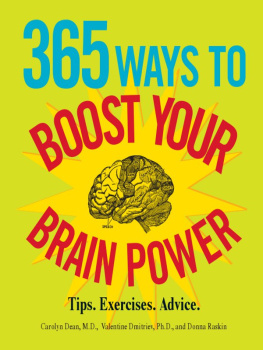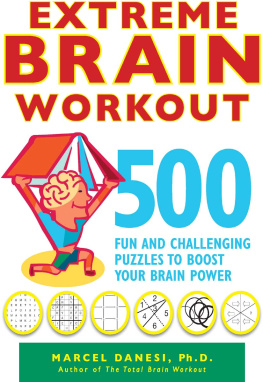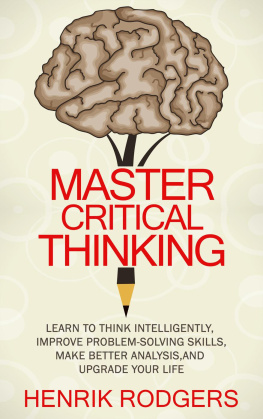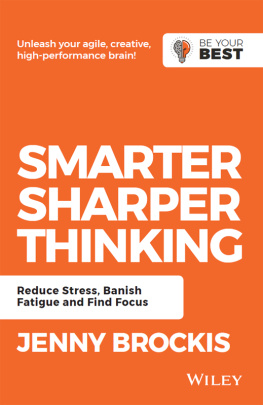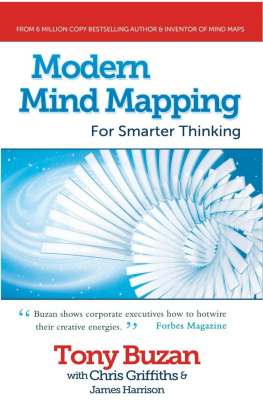Copyright 2020 by Rockridge Press, Emeryville, California
No part of this publication may be reproduced, stored in a retrieval system, or transmitted in any form or by any means, electronic, mechanical, photocopying, recording, scanning, or otherwise, except as permitted under Sections 107 or 108 of the 1976 United States Copyright Act, without the prior written permission of the Publisher. Requests to the Publisher for permission should be addressed to the Permissions Department, Rockridge Press, 6005 Shellmound Street, Suite 175, Emeryville, CA 94608.
Limit of Liability/Disclaimer of Warranty: The Publisher and the author make no representations or warranties with respect to the accuracy or completeness of the contents of this work and specifically disclaim all warranties, including without limitation warranties of fitness for a particular purpose. No warranty may be created or extended by sales or promotional materials. The advice and strategies contained herein may not be suitable for every situation. This work is sold with the understanding that the Publisher is not engaged in rendering medical, legal, or other professional advice or services. If professional assistance is required, the services of a competent professional person should be sought. Neither the Publisher nor the author shall be liable for damages arising herefrom. The fact that an individual, organization, or website is referred to in this work as a citation and/or potential source of further information does not mean that the author or the Publisher endorses the information the individual, organization, or website may provide or recommendations they/it may make. Further, readers should be aware that websites listed in this work may have changed or disappeared between when this work was written and when it is read.
For general information on our other products and services or to obtain technical support, please contact our Customer Care Department within the United States at (866) 744-2665, or outside the United States at (510) 253-0500.
Rockridge Press publishes its books in a variety of electronic and print formats. Some content that appears in print may not be available in electronic books, and vice versa.
TRADEMARKS: Rockridge Press and the Rockridge Press logo are trademarks or registered trademarks of Callisto Media Inc. and/or its affiliates, in the United States and other countries, and may not be used without written permission. All other trademarks are the property of their respective owners. Rockridge Press is not associated with any product or vendor mentioned in this book.
Interior and Cover Designer: Linda Snorina
Art Producer: Samantha Ulban
Editor: Lori Tenny
Production Editor: Ruth Sakata Corley
All images used under license Shutterstock
ISBN: Print 978-1-64739-326-7 | eBook 978-1-64739-327-4
R0
I would like to dedicate this book to my wonderful grandchildren, Alexander, Sarah, and Charlotte, who are all young critical thinkers most of the time. I also wish to dedicate it to all those who have been victimized by falsehoods, in the hope that they will find the intellectual tools in this book to shelter themselves from any future victimization brought about by dishonesty and duplicity.
Contents
CHAPTER 1:
Critical Thinking: The Basics
CHAPTER 2:
The Art of Reasoning
CHAPTER 3:
Rhetoric, Fallacy, and Bias
CHAPTER 4:
Thinking Smarter in the Digital Age
CHAPTER 5:
Critical Thinking for Life
If youre reading this workbook on a touch-screen device, you can add notes and highlight text just like you would in a physical workbook.
Some sections will prompt you to write in answers or personal responses. Its easygive it a try right here: ___________.
With your finger, tap and hold for a few moments on the line above. Depending on the device youre using, an icon such as a magnifying glass will appear. Lift your finger and youll see an options menu. Select Note (or Notes) to add and save your own text. When youre done, an icon or highlighted area will remain, which you can always return to and tap if you want to reopen and read or edit your note.
The same tap-and-hold options menu offers Highlight or Color, which you can select if you want to highlight a passage or check a box. Experiment with it: By swiping your finger before releasing you can select entire sentences or paragraphs. The options menu also offers Bookmark for when you want quick access back to certain pages.
This method is the same on nearly all touch-screen ebook devices, but some have slight variations. If youd like more information specific to the device youre holding in your hands, a quick online search will yield best results.
Read not to contradict and confute; nor to believe and take for granted; nor to find talk and discourse; but to weigh and consider.
Francis Bacon
A while back, when my only child (a wonderful daughter) was a teenager, I faced challenges with her day in and day outlike any other parent, of course. I was especially frustrated by her nonchalance and indifference to my constant excoriations of her behavior. One day, I had a so-called epiphany! I realized that my approach was off-putting. I would say things like When I was your age..., You shouldnt do that, you know? and so on. I realized that I was moralizing rather than reasoning with her. Gradually, I started engaging her in arguments and in dispassionate dialogues, focusing on ideas rather than on her behavior: What message does your favorite band convey to someone like me? Did you read that article about drinking and driving? What do you think?
The positive change in our relationship was almost instantaneous, and I came to realize the relevance of what the South African clergyman Desmond Tutu once said: My father used to say, Dont raise your voice; improve your argument. I had discovered, in a phrase, the importance and power of critical thinking the ability to evaluate something objectively, rather than emotionally, in order to form a judgment.
I am a professor of linguistics at the University of Toronto, and this experience changed my whole approach to teaching and led me to develop a keen interest in how the relationship between language and logic works, establish a course on puzzles and problem-solving at the university, and conduct research on this topic ever since. So here I am, ready to share my expertise with you, with a practical book that hopefully will not only help you improve relations with family members (if that is the case), but also sharpen your reasoning skills, alert you to falsehoods, and shield you against clever persuasive languagein short, a book that will help you develop the basic skills required for critical thinking. In an era of conspiracy theories, disinformation, and plain outright lies, these skills have become absolutely vital. The ability to see through the quagmire of disinformation throughout cyberspace and to evaluate complex subjects reflectively and objectively will put you in a better position to make reasonable choices in your daily life, from deciding what to buy to voting rationally to avoiding scams.
I planned this book to be as informative and enjoyable as possible for anyone. Educators looking for supplemental critical-thinking material will find this book provides digestible and engaging content. Unlike denser treatments of critical thinking, my goal is to get you involved in it through activities and real-life examples. Nonetheless, it will offer a comprehensive look at the major skills that underlie critical thinking in clear language.


